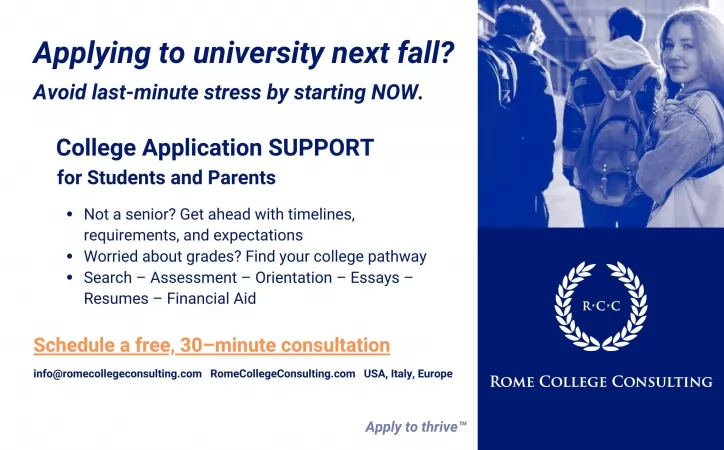All go at the Ara Pacis.
When the then centre-left city mayor Francesco Rutelli commissioned American architect Richard Meier to design a new pavilion for the Ara Pacis in Piazza Augusto Imperatore in 1996, he could never have imagined that it would take ten years to complete. Strong opposition to the project, modification of the original plans, archaeological surveys and last-minute changes* to the foundations, among other things, have all led to significant delays. However, the end is now in sight: the new structure is due to open officially on 21 March 2006. When it does, Rome will boast yet another completed work of contemporary architecture, as well as the first major new building in the historic centre for over 60 years.
At the end of September, the central hall containing the Ara Pacis was almost complete; the flooring still had to be laid, but the huge glass panels had been mounted in the side walls and the special inclining skylights had been fitted, while much of the inside and outside travertine cladding was in place. The altar, built by the emperor Augustus between 13 and 9 BC to celebrate the establishment of peace in the empire following military victories in Gaul and Spain, is tiny in comparison with the structure as a whole; nonetheless it appeared to sit comfortably in its bright new home.
Next spring the city will take delivery of a multi-purpose museum complex, to include a 150-seat auditorium at the north end, a reception area, lower-ground floor exhibition space for the fragments that got left out when the altar was reassembled on its present site in 1938, and a small terrace overlooking the 28 AD mausoleum of Augustus in the centre of the square. Outside, a flight of steps will lead up from Via di Ripetta to a small terrace containing a fountain and a marble column, recalling respectively the old Porto di Ripetta and the obelisk that stood in front of the Ara Pacis in its original location in present-day Piazza S. Lorenzo in Lucina, now in Piazza Montecitorio.
However, Rome residents should be able to visit the site well before the formal opening by booking onto a guided tour organised by the citys soprintendenza per i beni culturali (the ministry for fine arts and the national heritage) at weekends. Details of the visits are still being worked out; but according to Orietta Rossini, director of the Ara Pacis office, they will get under way between the end of October and the beginning of November, once work on the roof has been completed and the scaffolding taken down. The same source said restorers are due to begin cleaning the Ara Pacis at the same time; so visitors will not only be able to enjoy the altar for the first time in five years but they may also be able to see it being returned to its former glory.
The museum replaces the original pavilion, built hastily by Vittorio Ballio Morpurgo as a provisional cover for the reassembled monument in 1938. By the mid-1990s it had become clear that this structure offered little protection to the altar from air pollution, vibrations caused by passing traffic and overheating, and so the city administration invited the renowned New York-based architect, whose other work includes the Getty Center in Los Angeles, the museum of contemporary art in Barcelona and the Church of Dio Padre Misericordioso otherwise known as the Church of the Jubilee in Rome, to present preliminary drawings for a replacement. The commission and the resulting designs met with a chorus of protests, especially from local architects and centre-right politicians. Modified plans were approved in 1998 and work got under way with the demolition of the old pavilion in 2001.
Controversy remains. Guests arriving at a preview event on 23 September to coincide with the anniversary of the first Roman emperors birth in 63 BC ran into a small crowd of demonstrators belonging to the right-wing party, Alleanza Nazionale, holding a banner reading: Veltronis Ara Pacis: 15 million euro for a petrol station.
In actual fact, according to architect Gennaro Farina, director of the city councils office for the historic centre and the person responsible for overseeing construction, the total cost comes in at ?12 million. This, he said, is ?4 million more than the original budget. The increase is partly due to last-minute changes to the foundations and structure, to safeguard possible archaeological remains in the underlying area, and to the need to accommodate new anti-seismic regulations, which came into force after the budget had been drawn up. However, the overrun also includes the cost of building the steps and terrace, which were not accounted for initially.
The city authorities took advantage of the 23 September event to announce two other projects linked to the Ara Pacis. The first is the long-awaited competition for the redevelopment of Piazza Augusto Imperatore, which is badly in need of an overhaul. Ten teams of architects and archaeologists will be invited to present proposals for the consolidation and restoration of the mausoleum and surrounding area. This will include the reorganisation of the space around the churches of S. Rocco, S. Girolamo degli Illirici and Via di Ripetta and the rejuvenation of the porticoes among other things. If all goes to plan, the winners will be selected by mid-May next year. Only then will it be possible to say when work might realistically begin.
The second project is the creation of an underpass along Lungotevere in Augusta and the consequent pedestrianisation of the area between the new museum and the Tiber. Specifically, the project includes a three-lane tunnel for traffic running between Ponte Cavour and Ponte Regina Margherita, and an underground car park. Architect Farina said the project would be a joint public-private initiative and that the city council had already budgeted ?20 million. According to the same source, work should start within a year and take a further two. Farina added that the new pedestrian area will include a lift down to the Tiber, connecting to a new river-boat stop.
Was there a chance that the new project would be delayed by the discovery of archaeological remains? Farina seemed optimistic that this would not be the case as there had been extensive excavations here twice before, once when Porto di Ripetta was destroyed to make way for Ponte Cavour and then again during the construction of the river embankments at the end of the 19th century.
Guided tours: 16 Oct-19 March 2006, Sundays and holidays. 10.00, 11.00 and 12.00. 4. For more information and to book
tel. 0682077304 (Mon-Thurs 09.00-16.00; Fri 09.00-13.00).


















